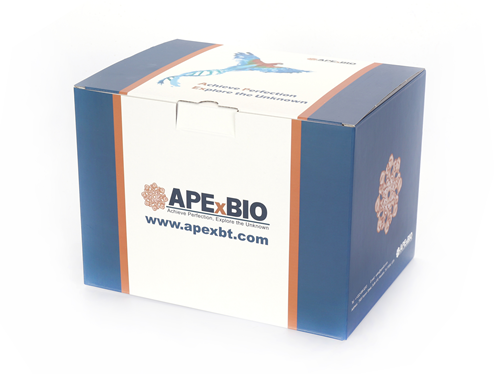Recombinant Human Osteoprotegerin
Osteoprotegerin (OPG), also named osteoclastogenesis inhibitory factor (OCIF), and tumor necrosis factor receptor superfamily member 11B (TNFRSF11B), is a TNFRSF11B-encoded protein in humans. OPG is a 401 a.a. basic glycoprotein which comprises 7 structural domains. It is either a 60 kDa monomer or a 120 kDa dimer linked by disulfide bridges. OPG acts as a decoy receptor for the receptor activator of nuclear factor kappa B ligand (RANKL) and inhibits the activation of osteoclasts and promotes osteoclast apoptosis in vitro and may also play a role in preventing arterial calcification. OPG has been applied to decrease bone resorption in women with postmenopausal osteoporosis and in patients with lytic bone metastases. Mature human OPG shares 86 %, 87 %, 92 %, 92 % and 88 % amino acid sequence identity with mouse, rat, equine, canine and bovine OPG, respectively.
Reference
1. Simonet WS, Lacey DL, Dunstan CR, et al. 1997. Cell. 89:309-19
2. Schoppet M, Preissner KT, Hofbauer LC. 2002. Arterioscler Thromb Vasc Biol. 22:549-53
3. Tsuda E, Goto M, Mochizuki S, et al. 1997. Biochem Biophys Res Commun. 234:137-42
4. Luan X, Lu Q, Jiang Y, et al. 2012. J Immunol. 189:245-52.
| Gene ID | 4982 |
| Accession # | O00300 |
| Alternate Names | TNFRSF11B, Osteoclastogenesis Inhibitory Factor, Tumor Necrosis Factor Receptor Superfamily Member 11B |
| Source | Escherichia coli. |
| M.Wt | Approximately 19.7 kDa, a single non-glycosylated polypeptide chain containing 173 amino acids. |
| AA Sequence | ETFPPKYLHY DEETSHQLLC DKCPPGTYLK QHCTAKWKTV CAPCPDHYYT DSWHTSDECL YCSPVCKELQ YVKQECNRTH NRVCECKEGR YLEIEFCLKH RSCPPGFGVV QAGTPERNTV CKRCPDGFFS NETSSKAPCR KHTNCSVFGL LLTQKGNATH DNICSGNSES TQK |
| Appearance | Sterile Filtered White lyophilized (freeze-dried) powder. |
| Stability & Storage | Use a manual defrost freezer and avoid repeated freeze-thaw cycles. - 12 months from date of receipt, -20 to -70 °C as supplied. - 1 month, 2 to 8 °C under sterile conditions after reconstitution. - 3 months, -20 to -70 °C under sterile conditions after reconstitution. |
| Formulation | Lyophilized from a 0.2 μm filtered concentrated solution in 20 mM PB,150 mM NaCl, pH 6.0. |
| Reconstitution | We recommend that this vial be briefly centrifuged prior to opening to bring the contents to the bottom. Reconstitute in sterile distilled water or aqueous buffer containing 0.1 % BSA to a concentration of 0.1-1.0 mg/ml. Stock solutions should be apportioned into working aliquots and stored at ≤ -20°C. Further dilutions should be made in appropriate buffered solutions. |
| Biological Activity | Fully biologically active when compared to standard. The ED50 as determined by neutralizing the stimulation of U937 cells is less than 10 ng/ml, corresponding to a specific activity of > 1.0 × 105 IU/mg in the presence of 10 ng/mL soluble rHuRANKL (sRANKL). |
| Shipping Condition | Gel pack. |
| Handling | Centrifuge the vial prior to opening. |
| Usage | For Research Use Only! Not to be used in humans. |
Quality Control & DataSheet
- View current batch:
-
Purity > 95 % by SDS-PAGE and HPLC analyses.
- Datasheet
Endotoxin: Less than 1 EU/μg of rHuOPG as determined by LAL method.








